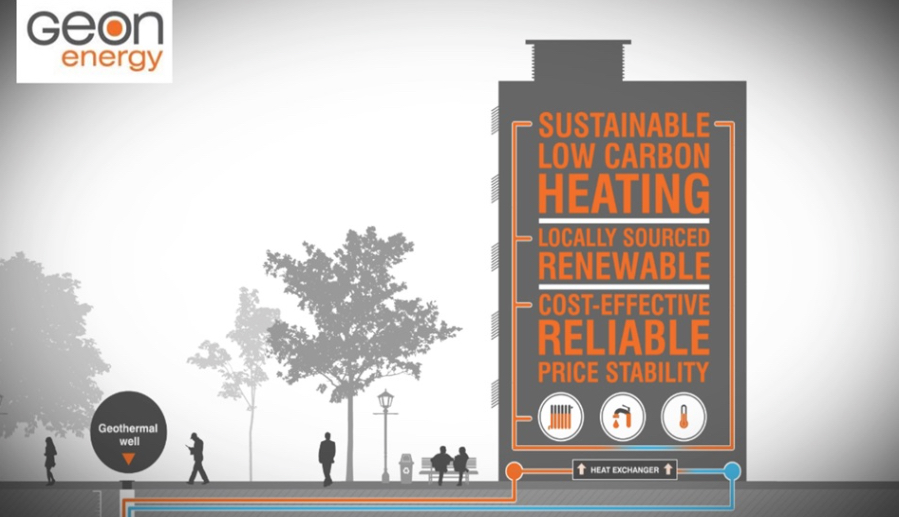First deep geothermal district heating network to kick of in Scotland
Scotland is to looking to instal district heating sourced from a deep geothermal single well.
Shared by ARUP in the UK today, Scotland is looking to a deep geothermal well to provide district heating. The press release states the following:
Ross Developments & Renewables Ltd (RDRL) has announced that the Scottish Government has allocated £1.8 million of grant funding to support the creation of Scotland’s first low carbon, renewable deep geothermal district heating network at The HALO Kilmarnock development in the West of Scotland.
The delivery of heat to the network will be from a deep geothermal single well (DGSW) which has been developed by Geon Energy Ltd – a joint venture between Geothermal Engineering Ltd and Arup.
The DGSW is a single geothermal well that is drilled to a depth of two kilometres. Water heated by the surrounding rock is drawn up from depth using a small pump. The heat is then transferred to water in the heating system.
Ross Developments & Renewables Ltd (RDRL) has announced that the Scottish Government has allocated £1.8 million of grant funding to support the creation of Scotland’s first low carbon, renewable deep geothermal district heating network at The HALO Kilmarnock development in the West of Scotland.
The delivery of heat to the network will be from a deep geothermal single well (DGSW) which has been developed by Geon Energy Ltd – a joint venture between Geothermal Engineering Ltd and Arup.
The DGSW is a single geothermal well that is drilled to a depth of two kilometres. Water heated by the surrounding rock is drawn up from depth using a small pump. The heat is then transferred to water in the heating system. Scottish Government’s Cabinet Secretary for Economy, Jobs and Fair Work, Keith Brown MSP. The well is scheduled to be drilled and installed in the first half of 2018.
Source: ARUP.


















